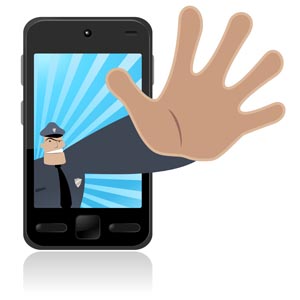California Police Agencies Lead the Way with High-Tech on Patrol

Internet Access, Real-Time Communications Deliver Information Faster to Cops
 I’ve often mentioned in my blog posts the irony of police officers accessing social media, email and the Internet on their personal smartphones, but having to settle for decades-old communications technology while on the job. There are several reasons for this discrepancy, with the existing climate of post-recession budget cuts making significant technology upgrades even more uncertain.
I’ve often mentioned in my blog posts the irony of police officers accessing social media, email and the Internet on their personal smartphones, but having to settle for decades-old communications technology while on the job. There are several reasons for this discrepancy, with the existing climate of post-recession budget cuts making significant technology upgrades even more uncertain.
Despite these challenges, some of California’s police agencies – the largest of their kind in the nation – are finding cost-effective solutions to bring the Web and the latest communications gadgets into patrol vehicles.
In November, the Los Angeles County Sheriff’s Department announced that it’s replacing mid-1980s-era mobile digital technology with a Raytheon mobile data computer system that has been battle-tested by soldiers in Iraq. The new state-of-the-art laptop computer systems are being installed in more than 2,400 vehicles and allow deputies to access the following:
• Sheriff’s Data Network and criminal databases, including FBI records
• Email
• California Department of Motor Vehicles (DMV) photos
• GPS routing to emergency calls
• Biometric data, such as fingerprints
With this information available at the tap of a finger, deputies no longer have to call the station for analytics when they’re chasing a suspect, responding to an emergency call or arriving at a crime scene. They can also type up reports remotely, which gets them in and out of the station faster and increases time spent in the field.
Then there’s the California Highway Patrol, which is responsible for 15,181 miles of highway in the state.
Recognizing the need for effective interoperable communications during an emergency, CHP has taken nine Chevy Tahoes and transformed them into sophisticated SUVs called Incident Command Vehicles that operate as public safety command centers on wheels. Each vehicle is a buzzing trove of high-tech connectivity with the latest communications equipment, including satellite, cellular, VoIP (Voice over Internet Protocol) and Internet access. At the center of this mobile command and control unit is the ACU-1000 Gateway system, a Raytheon technology, which can cross-connect different radio networks, connect those networks to phone or satellite systems, and function as a network connection on its own.
In both cases, the LASD and CHP show it is possible to bring communications technology that we use every day and place it in patrol vehicles so officers can have instant online access to the resources they need when it matters most.
On a related note, I’m attending a counterterrorism seminar this month at the UCLA Public Safety Network Systems Laboratory in Los Angeles. I hope to share some insights from that event in my next post.


Bring some of the goodness to our coppers!:)